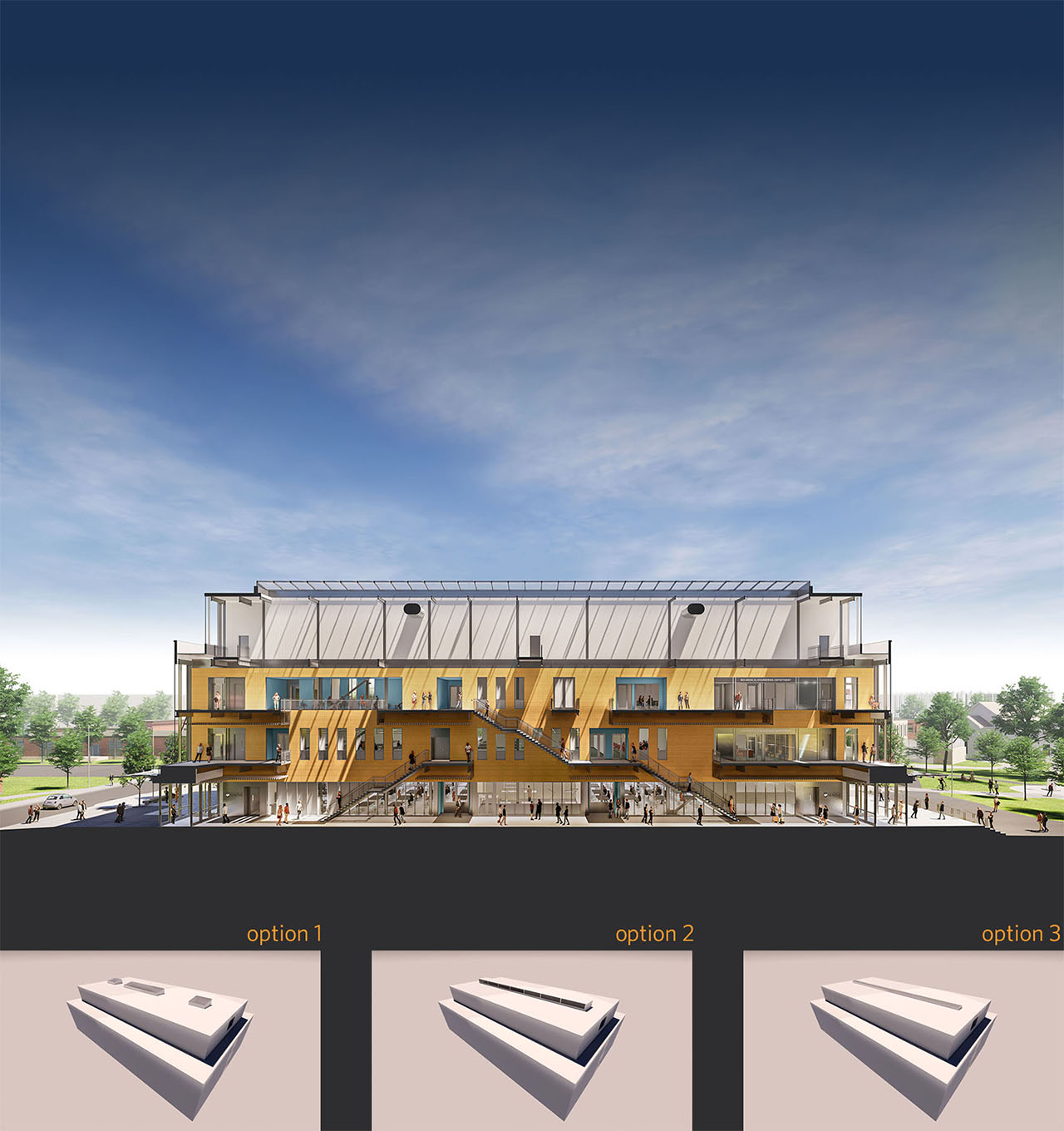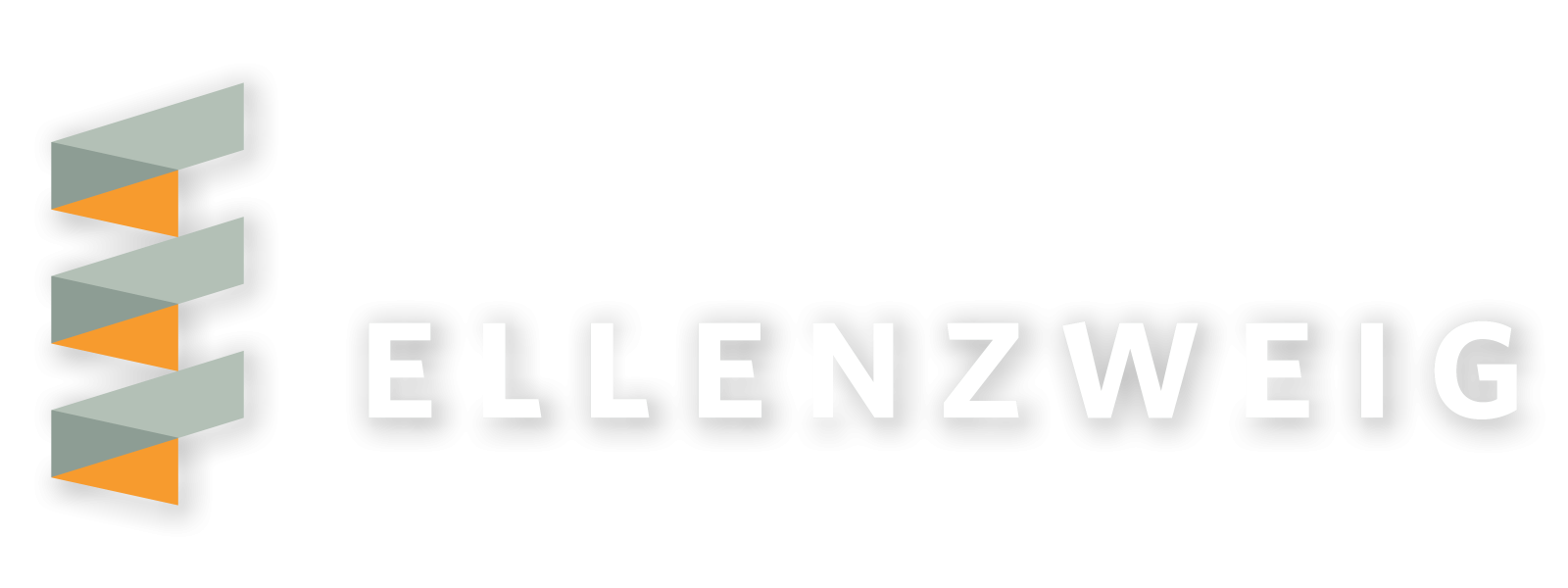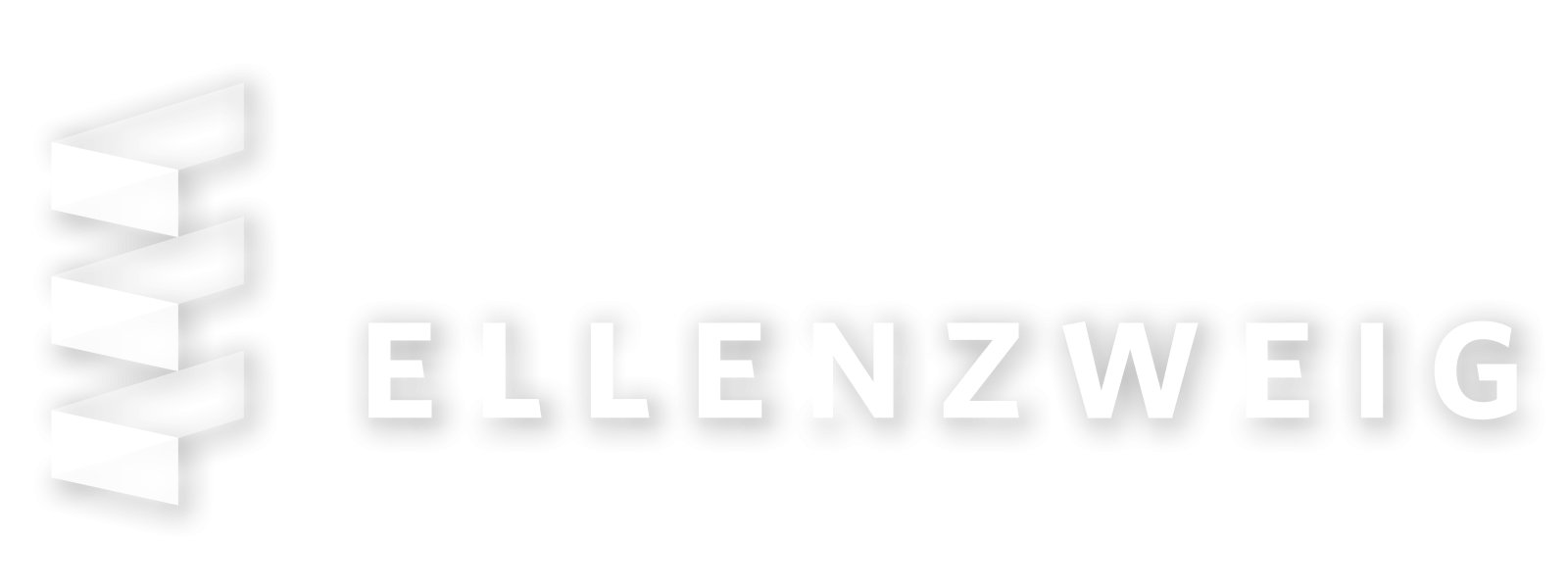Natural Daylight Harvesting
Optimizing Skylight Configuration
University of Maine
Ferland Engineering Education and Design Center
Orono, Maine
Located in Orono, Maine, the 110,000-square-foot Ferland Engineering Education and Design Center features a three-story, linear, central atrium space that unites the two sides of the building. Designed to function as the building’s “Main Street,” the atrium is the primary circulation space connecting teaching, laboratory, office, administration, and meeting spaces to one another. Because of its social and practical importance, providing a well-lit interior environment is paramount. Rather than primarily relying on artificial lighting, the atrium includes a skylight that runs the entire length of the space.
Budgetary considerations fixed the amount of glazing at about 1,500 square feet. A key design challenge was to maximize the impact of this area of glazing. Another design consideration was the less-than-ideal north-south orientation of the building on the site. As a result of these challenges and the need to maximize natural daylight penetration, three different glazing alternatives were explored, utilizing daylighting analysis and CAD software to determine the optimal configuration.
One design provided three large, individual skylights as wide (14’-0”) as the “Main Street” with each located above narrow floor openings on the corresponding floor levels below (Option 1). Option 2 provided a “Monitor” running nearly the length of Main Street with vertical glazing along the length of its east and west façades. Finally, Option 3 proposed a simple, narrow skylight running the length of the atrium.
The cross-sectional configurations for each option were explored to determine whether daylight penetration could be enhanced by elements such as canted walls, reflective light baffles, and glazing treatments.
Three glare-reduction glazing options were considered for Options 1 and 2: Building Integrated Photo Voltaics (BIPV’s) covering 60% of the skylight glazing, a 60% opaque ceramic frit dot pattern, and translucent glazing. The BIPV’s offered the additional benefit of potentially providing as much as 8% of the building’s electrical load. For Options 3 and 3.1, both clear and translucent glazings were considered.
The following longitudinal building section views of the four options depict the fritted option for the skylights, and clear glass for the monitors. (Based on the daylight analysis software output, and client-favored preference, these glazing systems were chosen.)
While the daylighting software analysis actually identified translucent glazing as the best option for glare reduction and light penetration to the ground level of Main Street, the University highly valued being able to see the sky over the course of a day. While the energy-generating BIPV’s were appealing from a sustainability point-of-view, first costs were a barrier. Moreover, their shadow patterns on walls and floor surfaces were deemed too visually pervasive for the narrow space.
Cost-effective fritting offered glare reduction without prominent shadow patterning, thus it was chosen. Most importantly, the sectional CAD studies revealed that the long, narrow skylight with its canted walls provided the best overall distribution of natural daylight for all three floor levels of the atrium.
Beyond the rendered light-penetration sectional views, Lux levels were modeled to understand exactly the quality and quantity of daylight that each of the three options would deliver to the atrium floors. These studies confirmed the efficacy of the long, narrow, fritted skylight as well as revealing the essentially undesirable light quality that would have been provided by Option 3.1. Thus, Option 2 is the option chosen for the project.
Ideally, the Lux levels in the yellow range are preferred, and minimizing the amount of deep red – especially adjacent to less-lit surfaces – is desirable. As revealed in the fritted skylight options, red zones are more dispersed, thus revealing lower levels of glare. This is made evident in comparison with the Option 3.1 monitor with a light baffle.
Learn more about the project here.







